I’ve been working on this post for about a month now, because when it comes to breastfeeding, things keep changing and evolving. But for the most part, it’s improved drastically. So if you’re just getting started on your own breastfeeding journey and it isn’t going quite as you expected, don’t lose hope.
Jump to:
Learning Curve
Trouble Latching
Nipple Shields: The Right Fit
Finding the Right Position
Interventional Pumping
Finger Feeding
Weaning off a Nipple Shield
Lactation Consultants, Support Groups & Classes
Supply & Demand: Pumping & The Haakaa
Cluster Feeding
Nursing to Sleep
LEARNING CURVE
As I’ve learned since becoming a mom, everyone’s breastfeeding journey is vastly different.
While one person may have no trouble at all, others will be in pain for weeks – even months – before it gets easier.
For some moms, it never gets easier.
Some women combine breastfeeding with formula feeding, while others exclusively pump and bottle feed their little one.
Some moms deal with a low supply while others deal with too much milk or an overactive letdown.
Some will breastfeed for years while others stop after months.
I didn’t quite grasp just how different breastfeeding could be from one woman to the next. That’s because before my daughter was born, I pretty much knew nothing about it.
I remember shortly after Grace arrived, her pediatrician asked me if my milk had come in. My answer with an inflection in my voice: “Maybe?”
I didn’t even know what that felt like or how to tell if I had milk. (It had come in and now I know when your breasts get hard and feel tight, they’re full of that liquid gold (a.k.a. they’re “engorged”).
I also remember in those early days feeling the sensation of my milk letting down (a.k.a. “letdown”). For me, my nipples tingle, almost like pins and needles. At first I thought it was just some sort of innate radar where my body was telling me Grace was hungry (Cool thought, right?!) It wasn’t until a couple of weeks after her arrival that I realized milk was actually flowing from my nipples.
My lack of knowledge is why I want to share my own breastfeeding journey. My goal is to give other first time moms, or those who are just curious, a glimpse of what they might expect and to see how the process is ever changing. I’m also sharing some tips and tricks I’ve picked up along the way.
So let’s go back to the beginning…

TROUBLE LATCHING
Grace arrived a bit unexpectedly three weeks before her due date. She was delivered in the traditional way (ahem, via down there) and when they placed her on my chest just after her arrival, she had difficulties latching.
I always pictured breastfeeding being so easy and natural. I mean, that’s what our bodies are designed to do.
But in those first moments, Grace would suck and come off, suck and come off. No one seemed that concerned though so I just kind of let it be. After all, I was overwhelmed by having just given birth and I was also told a just-born baby’s belly could only hold drops of colostrum. Side note: Colostrum is the first milk your body produces and it’s concentrated with nutrients, hence babies get a lot of bang for their buck.
Grace made her appearance around 6pm and later that night, as I was trying again to breastfeed her in the hospital bed, a nurse came in and saw she was having difficulties latching. The nurse said it’s a common problem with babies who arrive early because their mouths are so small. So she gave me a nipple shield to help.
It did. Grace had no trouble latching after that. But so began my reliance on a nipple shield for months.
More on that in a bit.
NIPPLE SHIELDS: THE RIGHT FIT
While Grace was latching with the nipple shield, I noticed I was getting some blistering. So my next nurse (my favorite one) examined my nipple and said I had been given the wrong size shield. I needed something a bit larger because it was rubbing and creating friction. The new size helped tremendously.
Also, a side note about breastfeeding, I experienced severe cramping every time I fed Grace in the days after giving birth. As I learned in the hospital, it’s because breastfeeding helps your uterus contract and return to its original size.
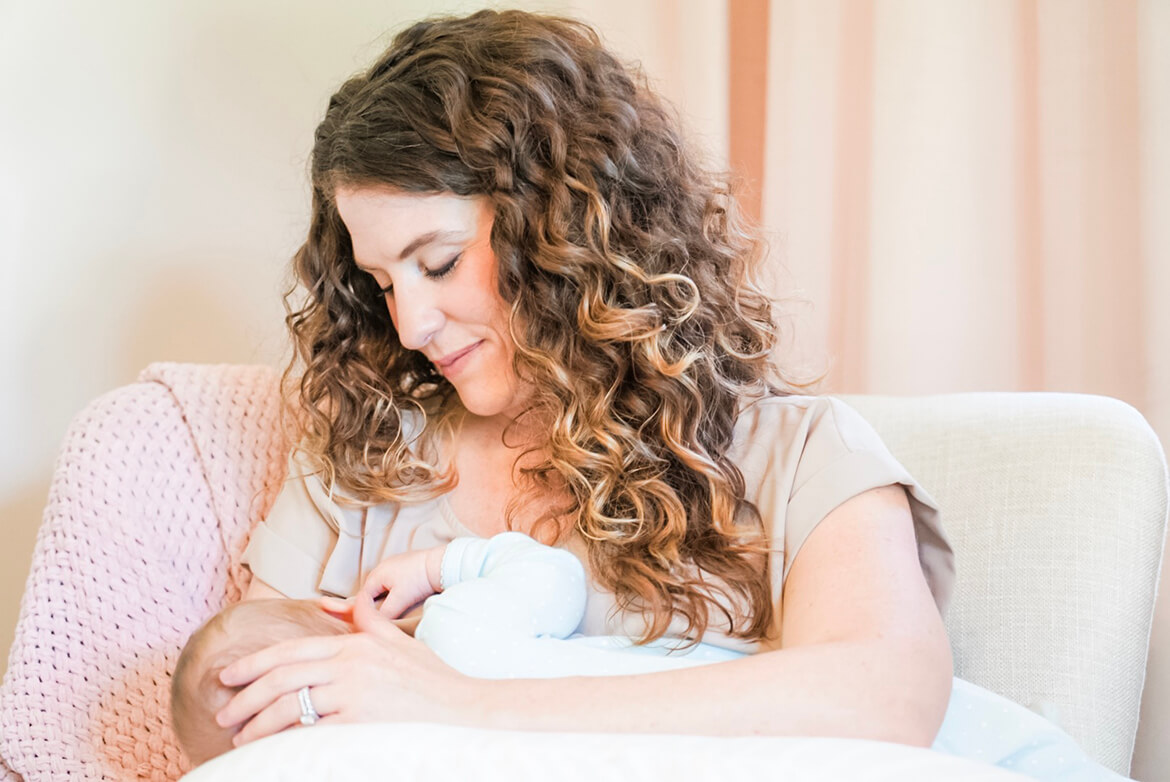
FINDING THE RIGHT POSITION
During those first days in the hospital (which actually felt like weeks because we barely slept), I also tried out multiple nursing positions.
I tried the football hold, cradle, cross cradle and side lying positions.
It was a little overwhelming handling a fragile newborn baby while also getting her to latch properly. There seemed to be a lot of rules — make sure their feet have room to move, hold their head on the two bones right behind her ears, this arm goes there and that one goes here, now jump on one foot and spin around. Wha wha what?
The football hold just seemed too complicated and I could never get it down. I tried side lying and did that often in the hospital bed. I also started doing a combo of cross cradle and cradle, which is what I most often use now.
To latch her, I typically begin a feed in a cross cradle hold and then move my arm so her head is positioned in the crook of my elbow (cradle hold) while she’s eating.
INTERVENTIONAL PUMPING
Since Grace arrived early, at 37 weeks, a lactation consultant in the hospital recommended I start early intervention pumping to help stimulate my milk supply and prevent her from losing too much weight. That meant pumping every three hours around the clock.
Apparently 37 weekers often end up back in the hospital because they drop too much weight. So I would feed Grace and then hook myself up to a pump. No milk would come out – I was lucky to get a couple of drops – but the goal wasn’t to collect anything. It was just to tell my body that it needed to produce it, and pumping after feeding apparently mimics having twins, hence twice the amount of milk.
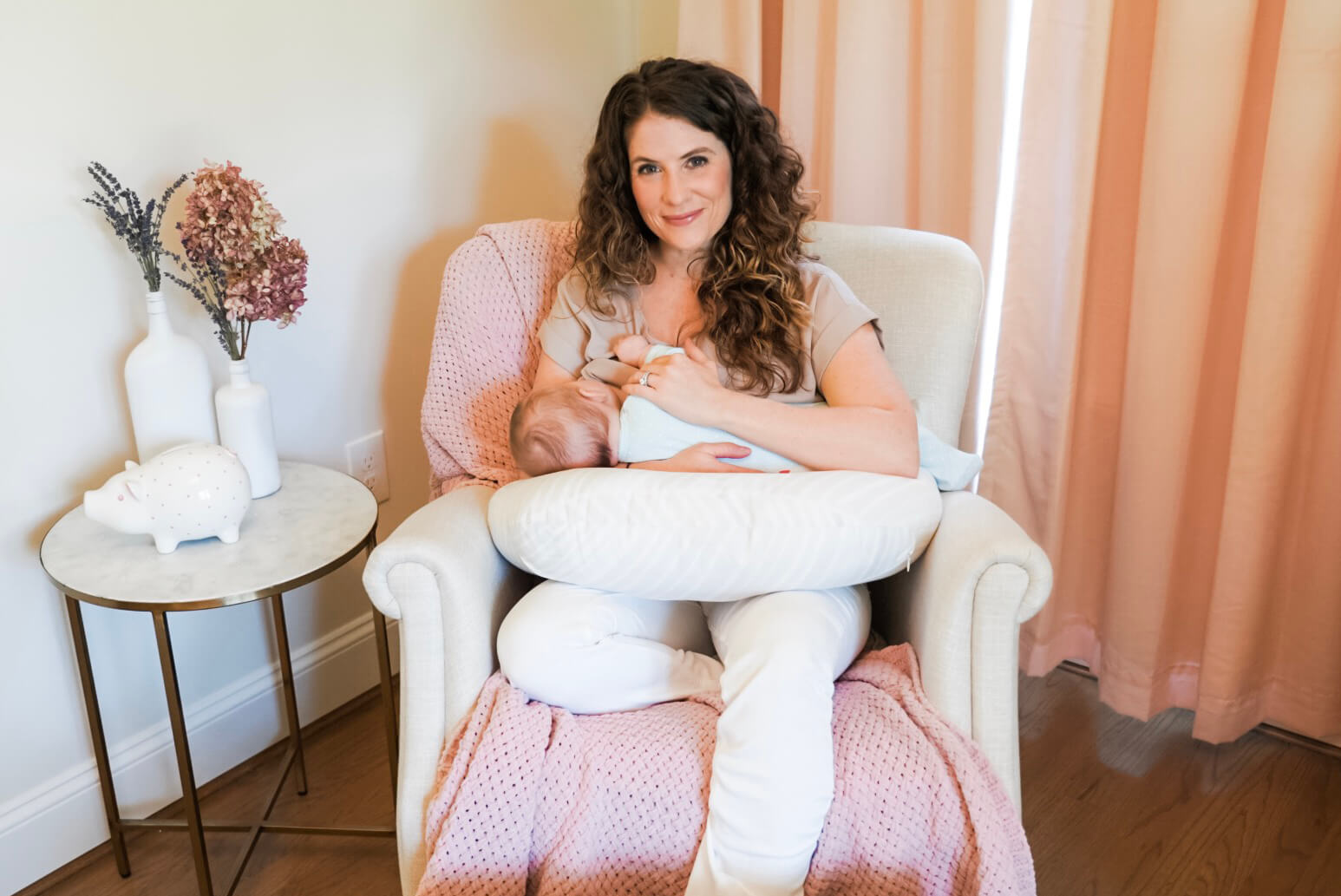
FINGER FEEDING
When we left the hospital, feeding became even more complicated. We met with a lactation consultant who taught us how to give Grace a supplemental “finger” feed. This was also necessary because Grace arrived early and we needed to prevent her from dropping weight.
For the first two weeks of her life, we fed Grace at least every three hours (timed from the start of the last feed, not from when it ended).
So I would first breastfeed Grace (she was a SLOW feeder and would take anywhere from 45 minutes to an hour plus to finish), then I would pump for 15 to 20 minutes, and then whatever milk I had pumped after the previous feeding session my husband would finger feed her.
So what exactly is finger feeding, you ask? It entailed taping a tiny little tube to the tip of his finger so it essentially mimicked a nipple.
Finger feeding took quite a while too, and then everything had to be cleaned – pump flanges, the finger tube and contraption, nipple shield, milk containers, etc.
At times the whole process of breastfeeding, pumping, and finger feeding took two hours or more, so when all was said and done, we only had an hour or less before starting her next feed. It was cray, cray.
Oh, and you also have to tend to your own recovery needs, which made things even more non-stop.
It was overwhelming to say the least, especially running on little to no sleep. Luckily, we made it through those two weeks and Grace gained the weight she needed to.
Thus, we were able to stop finger feeding as well as nursing her around the clock. So if Grace decided to sleep a three to five hour stretch at night, we were now able let her. Hallelujah!
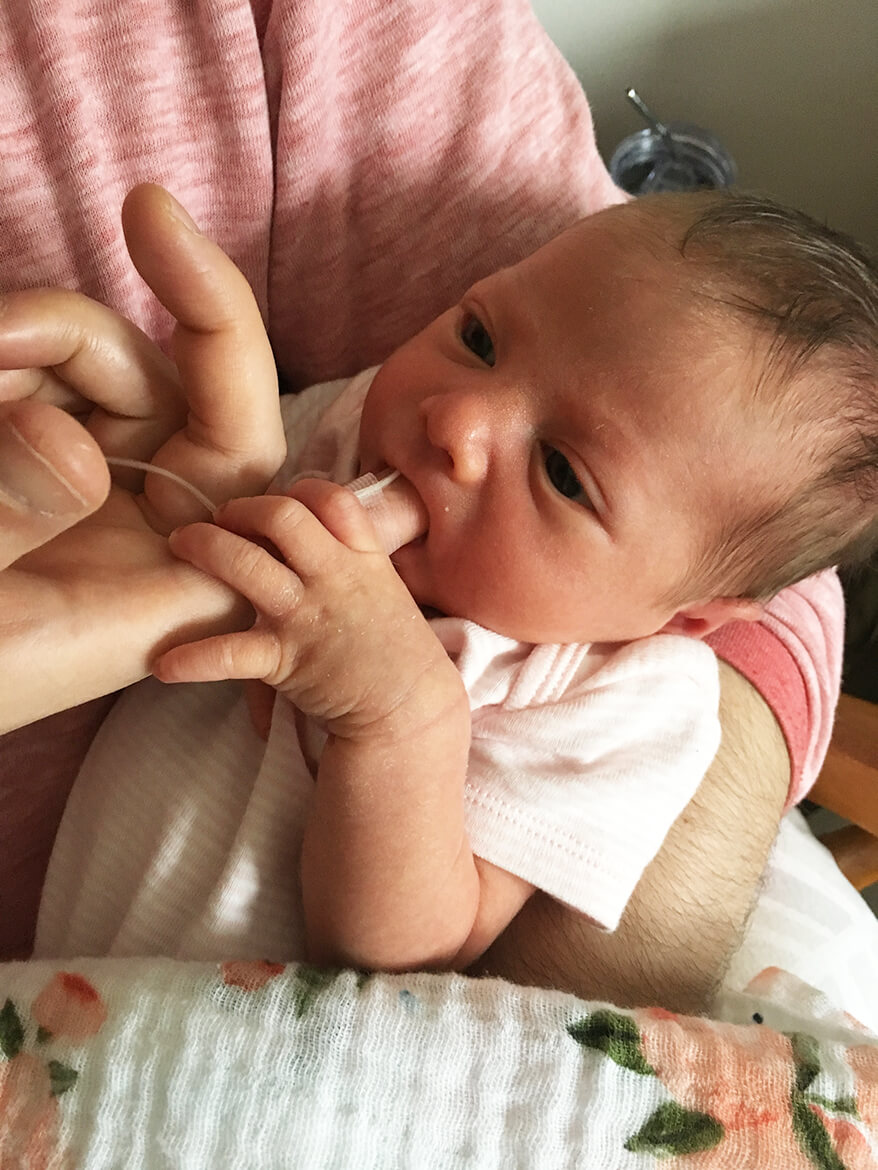
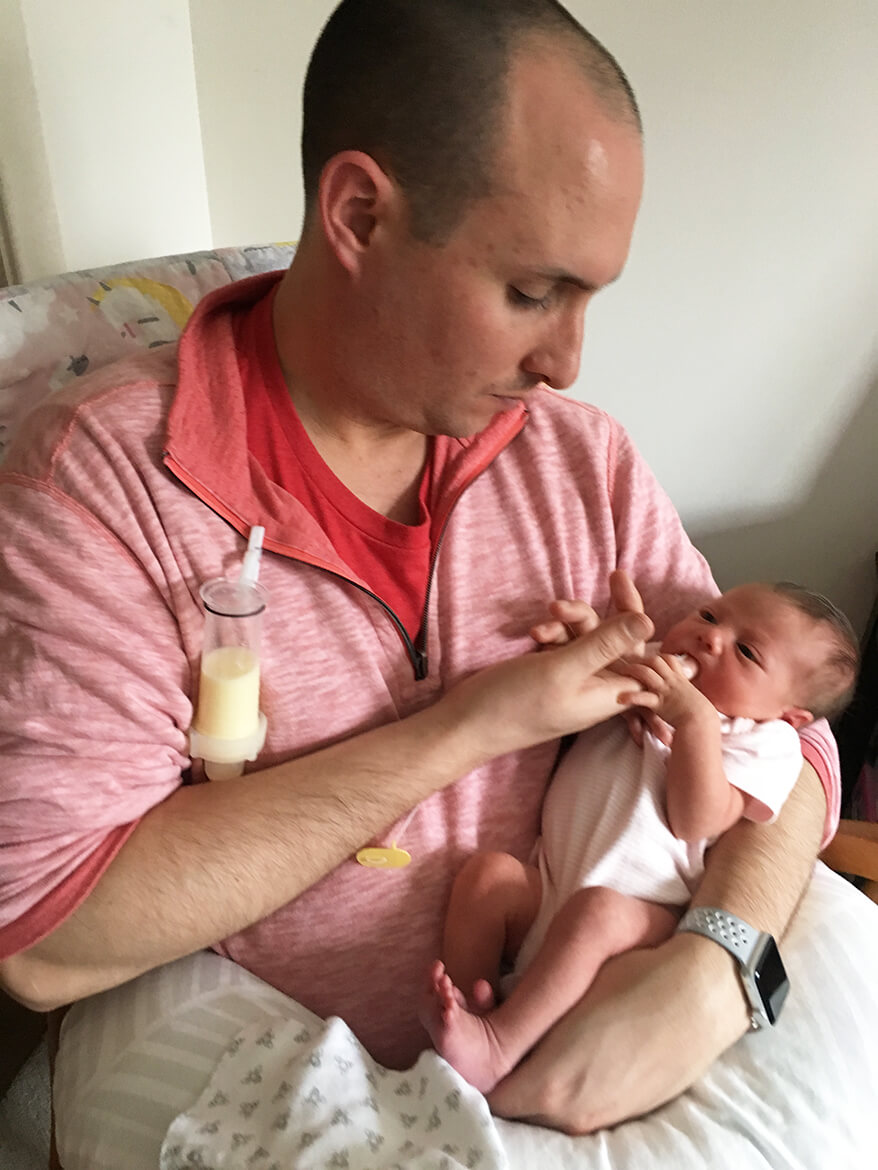 WEANING OFF A NIPPLE SHIELD
WEANING OFF A NIPPLE SHIELD
Using a nipple shield is a blessing and a curse. Yes, it prevented my nipples from being uber sore, but you also have to track it down before every feed, wash it after you’re done, remember to bring it when you leave the house, and try not to lose it since they are clear and blend in with everything.
When Grace turned 16 weeks old, we started weaning off the nipple shield (it wasn’t the first attempt). And by weaning, she basically decided she hated using it.
One night I noticed she wasn’t staying on my nipple and was fussing and nudging it, so I took it off and she was content after that.
I had tried weaning off several times in the past, but after feeding her a few times, my nipples were on fire.
I even had my latch examined by a lactation consultant who said it looked fine. In fact, during our session I felt no pain feeding Grace. But after I left, my nipples again felt sore.
If you’ve never breastfed before, it’s supposed to be painless and only feel like a tugging sensation.
For a few days we were in limbo of going back and forth between using the nipple shield (when my nipples were super sore) and not using it.
Then by the end of week 16, we had pretty much stopped using it altogether, but my nipples HURT. But at the start of week 17, days before her four month birthday, I made some adjustments to Grace’s latch: 1) First, I almost always use a Boppy pillow or some kind of pillow to prop her up, 2) I repositioned her so her head and chin tilts up towards my nipple (similar to how you’d lift your chin if you were drinking a glass of water), 3) I used my thumb and index/middle fingers to flatten my nipple before putting it in her mouth and 4) I aimed my nipple towards the roof of Grace’s mouth.
Whether it was these steps (which I thought I had tried before) or just the fact that Grace finally learned how to latch properly, the pain went away. I’m happy to say we’ve been breastfeeding smoothly ever since.
We’re now at the point where I can easily pop her on and off to feed without worrying so much about her position, squeezing my nipple, etc. I think it’s because she finally knows how to latch properly.
Also, Grace’s feeding time has sped up incredibly. As I mentioned earlier, it would take her sometimes 45 minutes to an hour-plus to finish feeding. Now it takes her sometimes as little as 10 minutes to finish.
I’ve read that nipple shields don’t impact the amount of milk a baby gets through breastfeeding, but I’d argue otherwise. However, now that her new feed time is so quick, I have a new problem: I wonder if she’s getting enough milk. Oy vey.
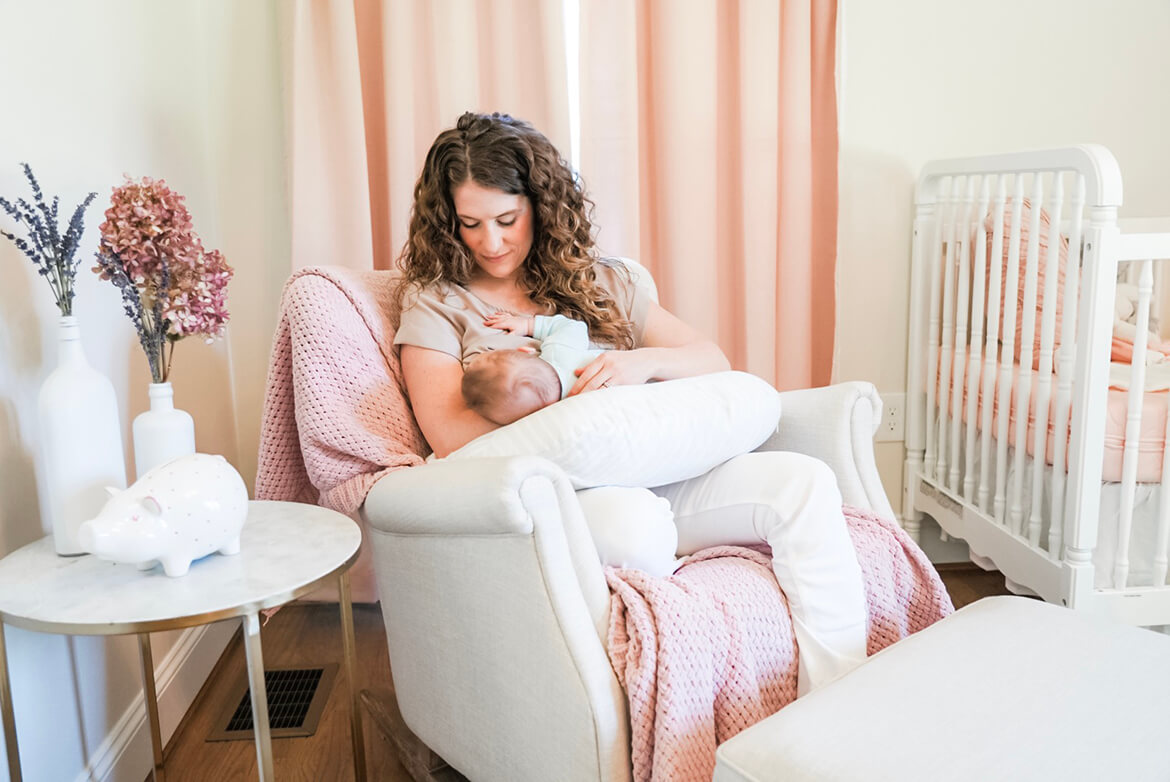
LACTATION CONSULTANTS, SUPPORT GROUPS & CLASSES
I highly, highly, highly recommend getting help from a lactation consultant if you are breastfeeding. They are wonderful resources, and if you’re fortunate, insurance will cover it.
As I mentioned, I saw a consultant in the days after leaving the hospital when she taught my husband Tom and I how to finger feed.
During that visit, she also watched me feed Grace, helped with positioning, and weighed her before and after to see how much she ate.
I ended up visiting her again when I first started trying to wean off the nipple shield. I also attended a couple of breastfeeding support group meetings. All were very helpful as I picked up bits of information and advice.
For example, at one meeting I learned if a baby is clamping down, it could mean you have an overactive letdown.
I should also mention that I did take a breastfeeding course while I was pregnant, however I didn’t find it useful. It could be because I’m more of a hands on learner, as well as because every baby and breastfeeding experience is different. So if a pregnant mom were to ask me if a class is worth it, I’d say no.
SUPPLY & DEMAND: PUMPING & THE HAAKAA
Breastfeeding is a use it or lose it deal. If you miss feedings and don’t pump, your supply will dwindle. If you pump extra milk after a feeding or feed your baby frequently (see cluster feeding section below), your supply will ramp up.
Early on, I started using a Haakaa to collect milk and boost my supply. The Haakaa is a manual silicone pump that simply attaches to your breast via suction. I nursed Grace from one side and put the Haakaa on the other breast to collect letdown and extract milk. During the next feeding, I’d switch sides.
My husband, mom or mother in law would then give Grace the milk I had collected in a bottle while I ran out to do errands, make dinner, or take a shower. I’d still pump if I missed a feeding session though. Also note, we waited until week three to introduce Grace to a bottle as well as a pacifier. We also make sure to use slow-flow nipples that mimic breastfeeding. She has never since had an issue taking a bottle.
What I like about the Haakaa is that it’s so much easier than hooking up to a machine to pump. I received an S2 Spectra through insurance. It works great, but there are a lot more steps involved. There are more pieces to clean, you are tethered to the wall since the machine is plugged in, and you have to physically hold the flanges throughout your pumping session (unless you purchase a special pumping bra). For those who are deciding on a pump, I would recommend the S1 Spectra versus the S2. I’ve since learned that the former can be battery operated, which makes pumping more portable.
Regarding supply, mine was definitely healthy early on and I think the Haakaa had something to do with it. It may have actually been too healthy. At my six week postpartum checkup, I saturated my doctor’s office gown while waiting to be seen.
Also, if Grace slept through the night, I’d wake up in the morning so engorged and uncomfortable. I’m also fairly certain some of the nipple pain when I tried to feed Grace sans nipple shield was because of an overactive letdown.
Now, however, my supply seems to have evened out. I’m not soaking through shirts and when I wake up my breasts are only slightly full. Yet I still seem to be making enough milk for Grace as she’s gaining weight and wetting/soiling diapers per usual. Both are health indicators for breastfeeding moms.
From what I’ve read, it’s normal for your supply to even out and for your breasts to feel softer.
I’ve also for the most part stopped using the Haakaa. The only time I do use it now is later in the day to collect a bit of milk to mix with her vitamins (Poly-Vi-Sol with Iron).
Now that I’ve decided to stay home with Grace, I’m also much less concerned about collecting and storing milk. I have some jars of frozen milk in the freezer from a few months ago that we’ll probably never touch. Also, since her feeding time has sped up tremendously, she’s less likely to get a bottle.
CLUSTER FEEDING
I had heard the term cluster feeding before having a baby but never quite knew what it meant. So if you’re new to the whole breastfeeding thing, just know that cluster feeding is one of the hardest parts of the job.
Cluster feeding happens during growth spurts. It’s when a baby seems to feed nonstop and it usually happens in the evening.
Those early months are a bit hazy now, but there seemed to be weeks at a time where Grace would spend the entire late afternoon and evening on my boobs.
I would time feedings using an app and there were days when she’d spend five hours straight nursing (with occasional breaks).
It was insanely hard. It also made having visitors difficult. But on the bright side, I got to binge watch a lot of Netflix.
NURSING TO SLEEP
This is a hot debate among moms, doctors and other folks. Should you or should you not nurse your baby to sleep?
Some say if you do, your baby will never learn to fall asleep on their own. Others say God gave you the gift of calming a baby with your boob and topping them off with milk, so why not do it?
I admittedly almost always nursed Grace to sleep for the first few months. That includes both naps and nighttime sleep. I’d attempt to swaddle her, rock her, shush her, and try every other trick in the book. However, nothing seemed to send her off to the land of nod. Once I learned that nursing not only calms her down but also makes her sleepy, I added it to my bag of tricks.
However, while I don’t think nursing to sleep is wrong, I would prefer she’s able to nod off more independently.
Only recently have I started to successfully get her down by placing her in her bassinet (a Snoo) drowsy but awake. It doesn’t work every time, but we’re getting there.
Phew! If you’ve made it this far, thank you for reading.
So four months and change is where I’m at with my little lady. My goal is to breastfeed Grace for two years, as recommended by the World Health Organization. Yet I’m happy we’ve made it this far.
Breastfeeding has been quite a journey so far and I know there’s still a long way ahead of us.
If you’re a breastfeeding mom, I’d love to know what’s the best piece of advice you’ve received. Leave a comment below. Or otherwise, just write me a message as I love hearing from you. 🙂
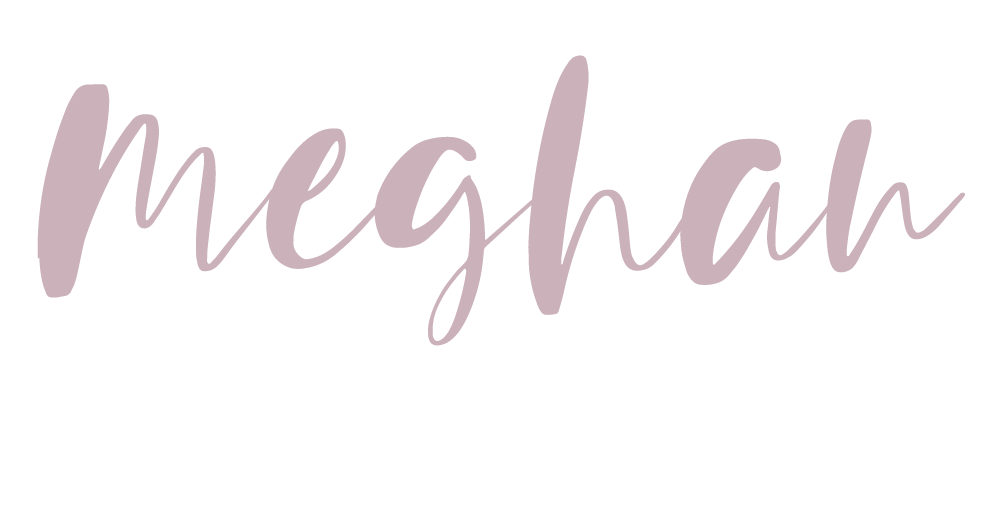
Pin Me!
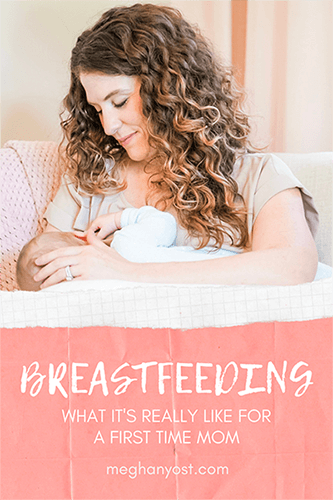

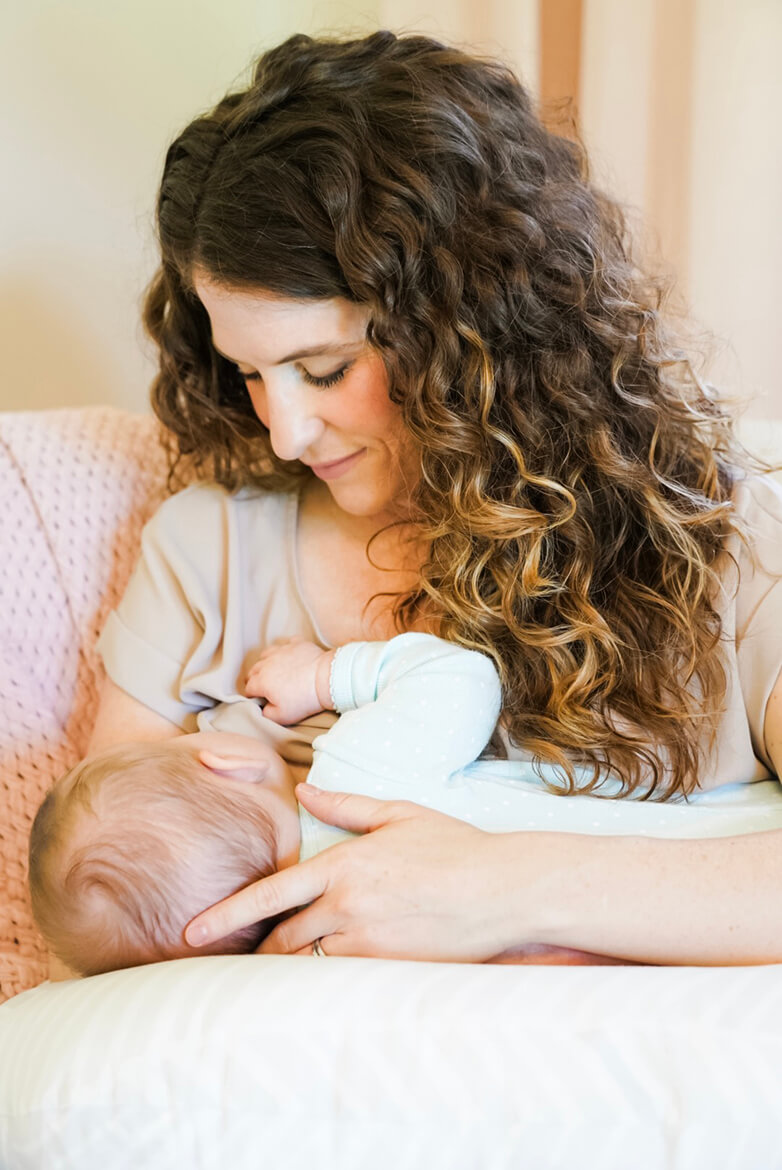
1 comment
[…] A Spooky True Story: Voices Over Baby Monitors Six Months of Grace Grace’s Birth Story My Breastfeeding Journey and Nursing Tips for First… The Best Toys and Books for a Four… Four Months of Grace Tips for Traveling with a Baby: […]